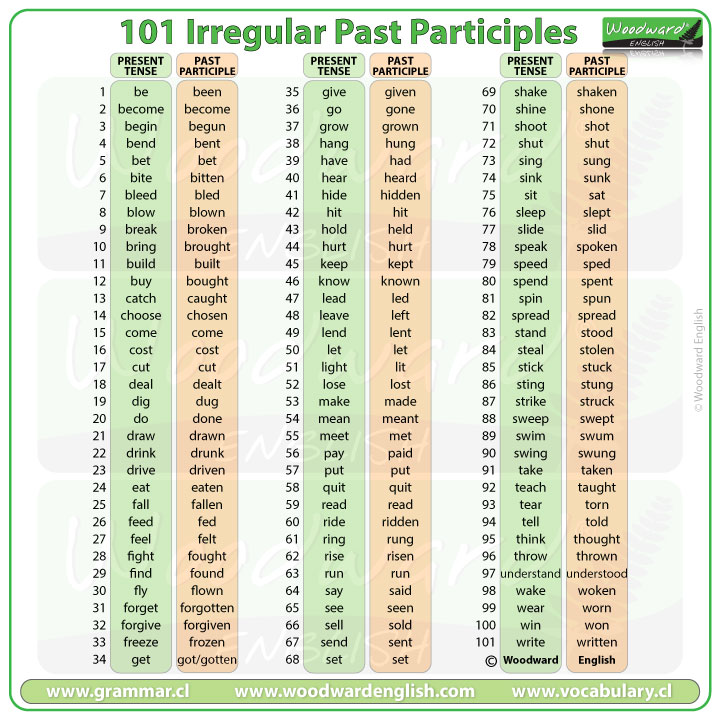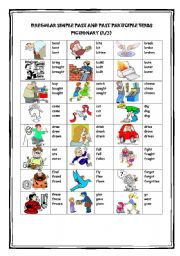
(Check out the videos below for more irregular verbs. The following is a list of commonly used irregular verbs. Irregular verbs are those that dont follow the normal rule of adding d, ed or ied to form their past simple and past participle.

Usually we will try to remember the base form (infinitive), past tense and past participle. Since they are irregular, they do not follow any pattern and the best way to learn them would be to repeat and memorize them. The simple past tense of some verbs do not end in ed. Regular verbs are those verbs whose past tense and past participle (2nd and 3rd forms) are formed by adding d or ed to the end of the verb. The list below is of the most common irregular verbs. For most verbs, the simple past tense is created by adding a d, ed or ied at the end of the word. The perfect tenses use the past participle form of the main verb in a sentence.

We use the simple past tense to talk about things that happened in the past.
#PAST PARTICIPLE ENGLISH IRREGULAR VERBS HOW TO#
#PAST PARTICIPLE ENGLISH IRREGULAR VERBS FREE#
We have lots of free videos that will help you improve your English and also advice and tips that will help you in English proficiency examinations like TOEFL and IELTS. 101 Irregular Past Participles with example sentences in English.You will hear a verb in its base form (infinitive without 'TO' e.g. In many cases, irregular verbs have irregular past participles and can be grouped according to their endings, as shown in Tables 1, 2, 3, and 4. build, bend, send ), stem changes (whether it is a vowel, such as in sit, win or hold, or a consonant, such as in teach and seek, that changes), or adding the n suffix to the past participle form (e.g. Welcome to our collection of English as a Second Language (ESL) tools & resources for students, teachers, and educators. The preterite and past participle forms of irregular verbs follow certain patterns.

More Lessons English as a Second Language


 0 kommentar(er)
0 kommentar(er)
